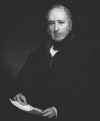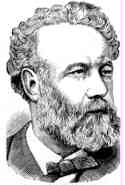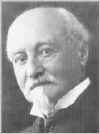|







Meanwhile:
How about a
little music?
We have a selection of tunes that were
popular during the first days of aviation, performed by Sue Keller, courtesy the
Ragtime Press:
Want to ask a question? Tell
us something? Arrange a showing of one of our airplanes? Ping:
mailto:[email protected]
| |
 he story of the invention of the airplane begins a century before the Wright
brothers' first flight. We've divided this century into four parts: he story of the invention of the airplane begins a century before the Wright
brothers' first flight. We've divided this century into four parts:
- The First Airplanes (1799 to 1853) -- The first gliding experiments with fixed-wing craft.
- Powering Up (1854 to 1879) -- The first
attempts to build powered airplanes.
- Pilots & Chauffeurs (1880 to 1898) -- The controversy between those that believe airplanes should be
inherently stable (like boats) and those who believed that a pilot or an airman should
keep them balanced.
- The Road to Kitty Hawk (1899 to 1903) -- The events leading up to the first sustained, controlled
powered flight.
While many people made important contributions to the development of the
airplane during the century before the first sustained and controlled flights, there are
five people who stand out. These folks set the stage and helped create the scientific
culture in which the Wrights worked. |
Click
on a picture to enlarge it.

The first airplane -- a kite on a stick -- built by Sir George Cayley in 1804.

John Stringfellow's unsuccessful 1868 steam-powered
triplane.

Otto Lilienthal piloting a glider in 1896.
|
| Sir George Cayley, an English baronet, first
conceived the idea of a fixed wing aircraft in 1799, then built the first
successful glider in 1804. A conscientious scholar, he conducted the first controlled
experiments in aviation, proposed aeronautical theories, and raised the quest for flight
from a fool’s hope to a true science. |

Sir George Cayley |
| Jules Verne not only invented the literary
genre of science fiction, he helped invent a culture of science hope. His
books were more widely read than any others in history, save the Bible. They encouraged
mid-nineteenth century folks to think about the possibilities that science offered —
and to expect that these possibilities would soon become realities. His first successful
novel, Five Weeks in a Balloon, was about flight; and his most successful novel, Around
the World in Eighty Days, included travel by air. In Master of the World, the
characters discuss the relative merits of lighter-than-air and heavier-than-air craft.
Verne comes down solidly on the side of airplanes. |

Jules Verne. |
| Alphonse Penaud was an enthusiastic student
of Cayley who furthered his scientific work. He also designed a remarkably modern-looking
airplane with a retractable undercarriage and glass-enclosed cockpit. But his most
important contribution to aviation was a popular children’s toy, first introduced in
1871— the rubber band-powered airplane. Because of this plaything, a generation of
young scientists and engineers grew up believing powered flight was possible. |

Penaud's rubber band-powered "planophore." |
| Otto Lilienthal invented the first successful
manned gliders and established the concept of the airman — a skilled
pilot who controlled his aircraft and carefully balanced it while in the air. Before
Lilienthal’s gliding demonstrations, it was widely assumed that an airplane would be
no more difficult to steer than a boat. Lilienthal died in a flying accident, and his
death set the Wright brothers in motion. Fittingly, his last words were "Sacrifices
must be made." |

Otto Lilienthal |
Octave Chanute collected and organized the
disparate aeronautical research that was taking place at the turn of the twentieth century
and became a nexus through which aviation enthusiasts shared information. In 1896, he
sponsored a group of enthusiasts who experimented with several glider designs in the
Indiana dunes on the shores of Lake Michigan. The most successful design, a biplane glider
with trussed wings, was the model for the Wrights' first gliders. Chanute also served as a
sounding board for several engineers and inventors, among them, the Wright brothers.
Back to Top |

Octave Chanute |
|

